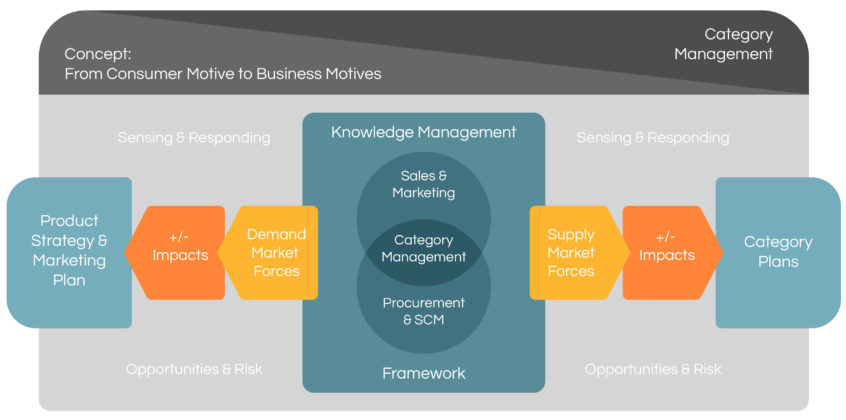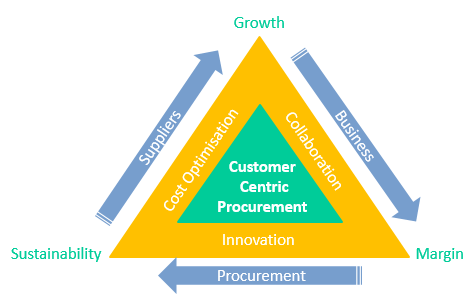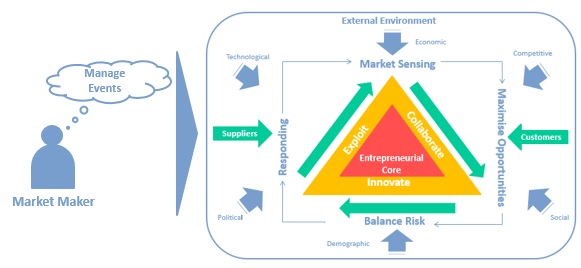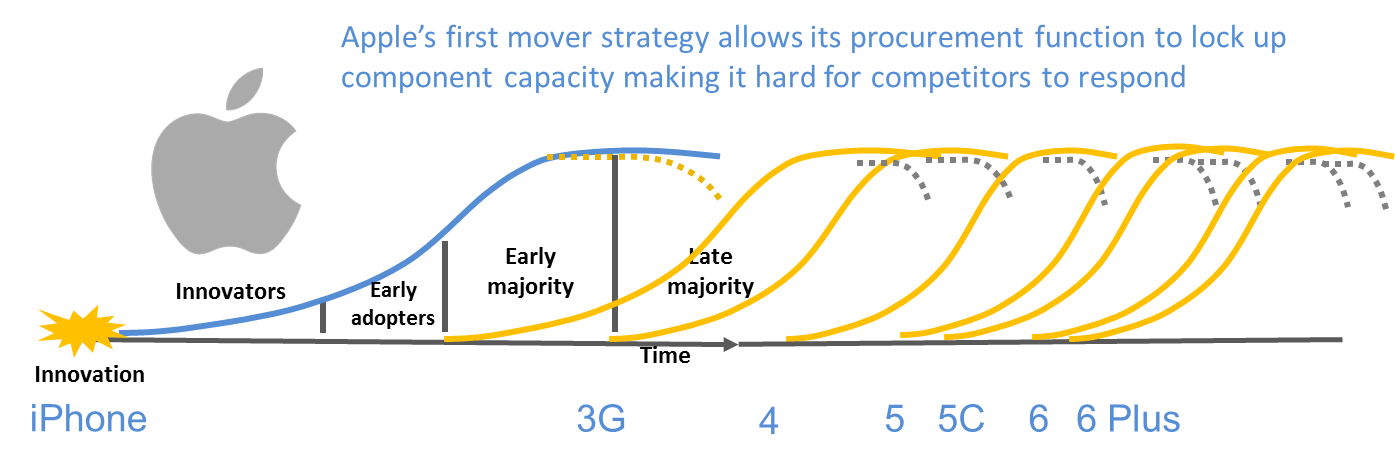The three goals of strategic procurement – CPO’s must contribute to three strategic goals if they are to influence overall corporate strategy
The three goals of strategic procurement
Procurement’s Golden Triangle
Leading companies are pursuing cost leadership and growth to dominate their industries, and in doing so they create an infrastructure to do it sustainably. Apple is the often cited example of such a strategy. The WSJ reported earlier this year that Apple recorded 92% of the total operating income from the world’s eight top smartphone makers in the first quarter, up from 65% a year earlier. Samsung Electronics Co. took 15%.
By adopting this model in procurement, the three separate goals can be achieved simultaneously:
- Cost leadership
- Growth
- Create a sustainable advantage
We call this Procurements Golden Triangle a model we developed back in 2009:
1. Achieve total cost leadership:
One key component is applying rigorous procurement methodologies to every category of external spending:
- incorporating procurement strategy within the corporate business plan
- developing category management in support of the company’s long-term goals
- determine what capabilities it should maintain in-house
- leverage competition in supply markets through robust strategic sourcing and the use of e-auctions
- managing suppliers to capture negotiated savings and drive further value capture
Rigorous procurement processes are necessary across the value chain to achieve a cost leadership position.
2. Create Growth:
The second goal of procurement strategy development is to create growth opportunities via supporting the product or marketing strategy to drive product or service differentiation, faster and better product innovation and market entry.
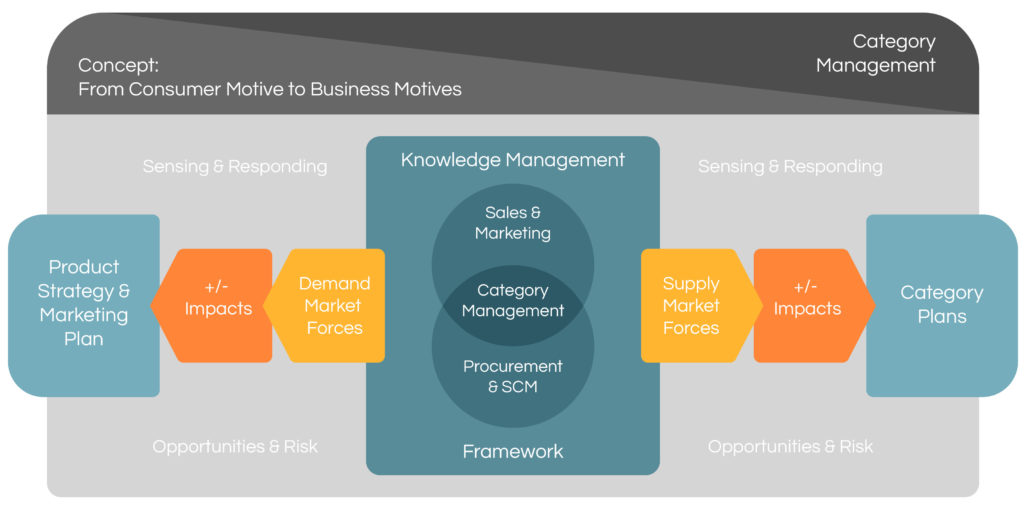
Link Category Management to the Customer
Collaborating with key suppliers who work along with the company’s R&D procurement and marketing functions in joint teams to offer ideas for new or improved products and services. This approach can cut development time and significantly reduce the time-to-market.
3. Create a sustainable advantage
Understand your procurement competency portfolios to position the company strategically in the value chain to control the market more effectively (see Figure 3).
Instead of reacting to market fluctuations, agile companies are designing strategies that help it manage markets to stay ahead of competitors by creating a series of competitive advantages.
While its technical advantages may only be short-term, the efficiency of its supply chain, however, has created a long-term competitive advantage allowing it to dominate supply markets and industry profits.
Market intelligence in procurement is essential to exercising control over supply markets. Deploying technology and dedicated resources to filter information from suppliers as the basic inputs for an intelligence network to garner information:
- Who has the technological edge?
- Who is most likely to make the next technological breakthrough?
- Who has capacity?
- Where are likely roadblocks?
With this kind of information, senior management can truly control its value chain and gain and make strategic advantages that are very difficult for its competitors to copy.
The three goals of strategic procurement
Binging it together
Procurement must align itself with the overall corporate and business strategy, so procurement professionals must, therefore, have a clear understanding of their organization’s strategy if they are to play a key role in shaping its future.
The competencies required of procurement to achieve the business goals must be crystal clear, and each role must have clarity in how it contributes to the business goals and the accomplishments expected in the role. This needs to be broken down into the activities and milestones to bring it to life and make it happen.
So a clear competency framework is required to drive both bottom line and top line improvements and to do this sustainably. While cost-focused initiatives such as strategic sourcing have helped to improve the bottom line, the challenge still for most CPO’s is to achieve full alignment with the strategic intent of the business.
Nuff said …
So if you would like to learn more about our services we would love to hear from you.
Learn how to gain a Procurement Excellence Award for your organization.

